Vintage_Mania
1979 Honda CB400T
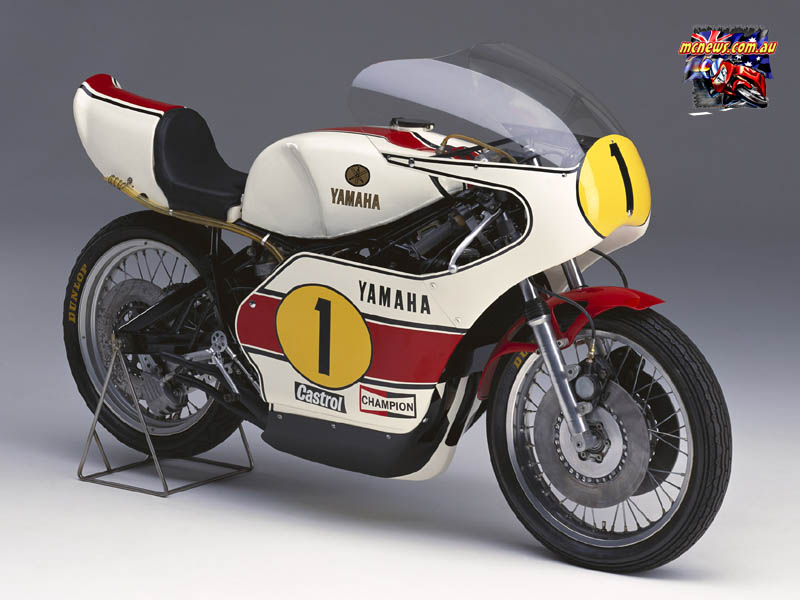
OW20 (1973-74) – Yamaha’s first 500cc factory machine
The OW20 was Yamaha’s first factory machine built to compete in the GP 500cc class. This machine mounted a liquid-cooled two-stroke parallel-four piston reed valve engine on a chromium molybdenum steel frame with disc brakes front and rear. It debuted at the opening round of the 1973 series in April, the French GP and Jarno Saarinen piloted it to a debut win.
The following year, 1974, it became even more competitive with the adoption of the Monocross suspension. Giacomo Agostini signed with Yamaha for the first time and competed with teammate Tevo Lansivuori. Agostini won rounds three and six and Lansivuori won round eight of the series. This, combined with the points earned by other Yamaha riders gave Yamaha its first manufacturers title in the 500cc class.
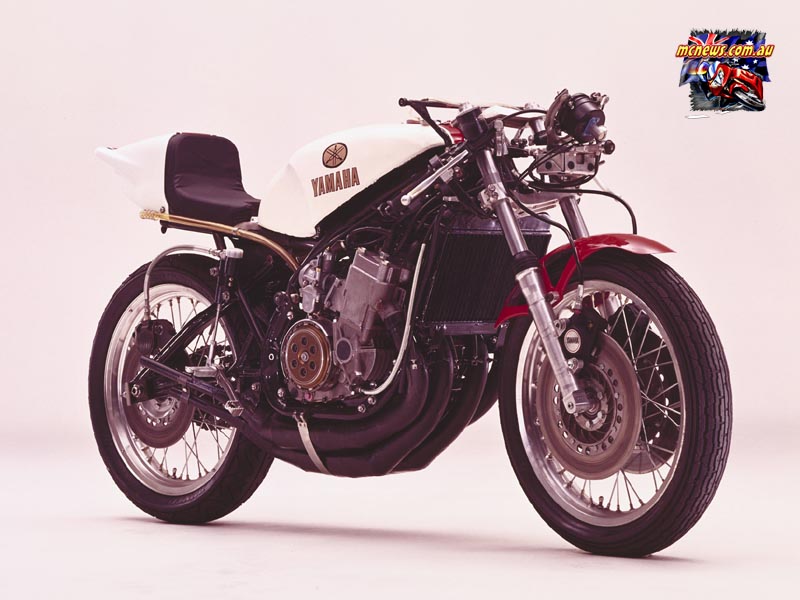
OW23 (1974-75)- Developed specifically for Grands Prix
Debuting at the Belgian GP of 1974, this was Yamaha’s first machine developed specifically for the 500cc class. It is the machine that Giacomo Agostini would ride to win the GP500 title in ’75, giving Yamaha its first individual championship in its third year of GP500 competition. Compared to the OW20 which had been developed jointly with the 700cc machine for Daytona competition with cylinder bored down to 500cc, the OW23 was considerably lighter and more compact in both engine and chassis and had a shorter wheelbase as well.
As a feature to reduce setup time, it also adopted a cassette type transmission. It was the same type as the on the MZ and MV Agusta, with the main shaft, drive shaft and shifter assembly as one unit that that was extractable on the opposite side from the sprocket, but it also featured detail maturation and improved reliability. This cassette transmission would become the base unit for those used eventually on the TZ250 production racer and the production TZR250SPR. Also the new muffler shape that would be called a stepped taper type featured a gentle trumpet shape in the defuser portion and a bowl shape at the rear portion of the expansion chamber that served to improve max. power output and torque in post-peak range. The square-type rear arm was another defining feature. The following year, 1976, Yamaha did not compete with a factory team in the GP, but Johnny Cecotto rode the OW23 to a second-place finish in the series opener.
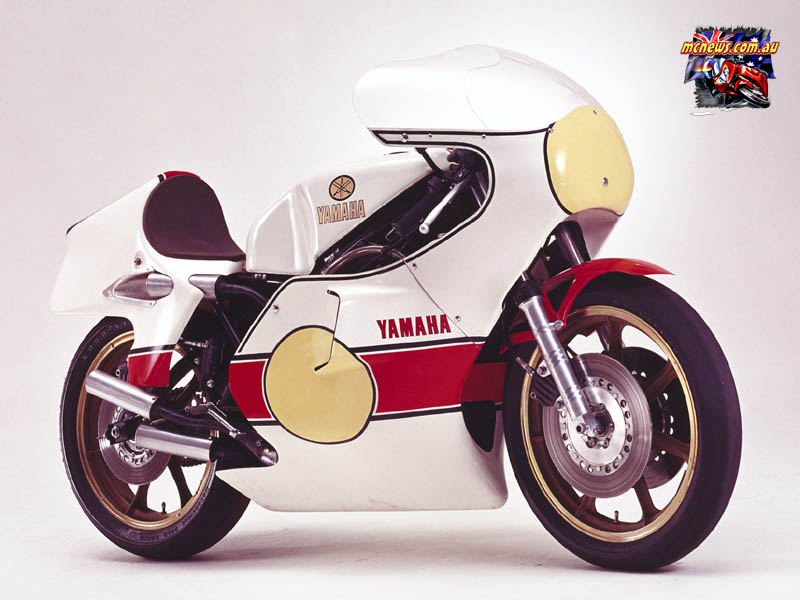
OW35 (1977)- New engine with revised bore and stroke
The 1977 model YZR500 (OW35) was the factory machine Yamaha returned to 500cc competition with after a one-year hiatus. The piston reed valve intake that had been used on the OW20 and OW23 was replaced by a piston valve system. Also, the cylinder pitch, which had been kept as small as possible on the OW23 for the sake of compactness, was increased (92 to 115) in order to allow more design freedom for the scavenging port. With this, the bore x stroke changed from the former 54 x 54 to a high-revving type 56 x 50.6 and a power jet type carburettor was adopted. Revisions were also made to the chassis to optimize aerodynamics with the rider’s form figured into the equation. Riding this machine, Steve Baker mounted the podium six times to finish the ’77 season ranked in second place.
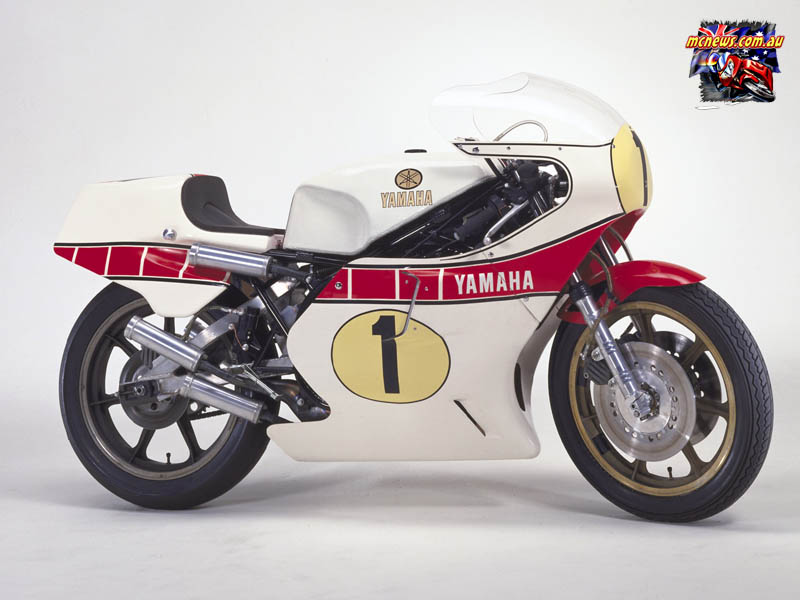
OW35K: Roberts’ title winner
OW35K (1977-78) – Roberts rides the YPVS model to his first title
Taking the 1977 GP model OW35 as its base, the OW35K adopted Yamaha’s new YPVS (Yamaha Power Valve System) technology for the first time. By making possible variable exhaust timing, this revolutionary device helped remove torque valleys from the engine’s power development characteristics and thus led to dramatic shortening of lap times. This YPVS had first been used in GP competition secretly from the Finnish GP in ’77. Johnny Cecotto rode this machine to wins at the Finnish GP and the Czechoslovakia GP to finish the season fourth, while Kenny Roberts won four of the series’ 11 rounds to win his first of what would be three consecutive 500cc titles.
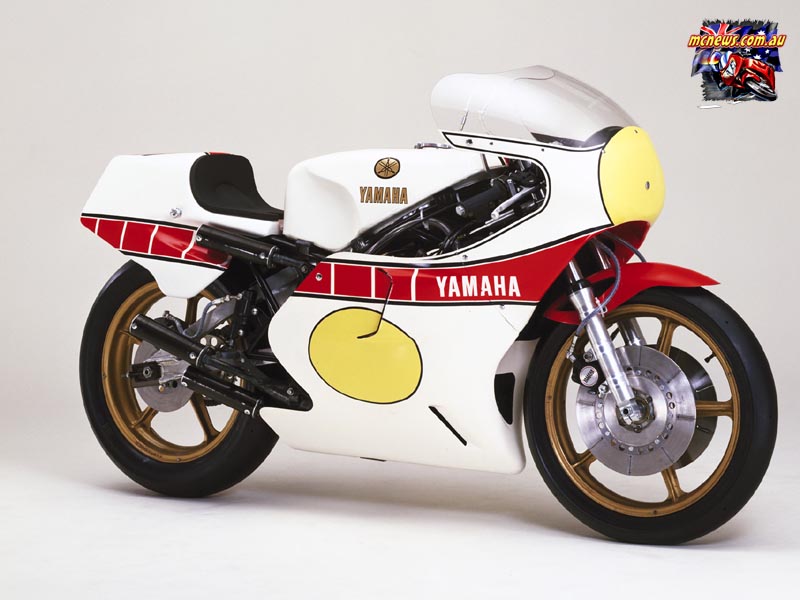
OW45 (1979) – The representative piston valve parallel four
As the second generation YPVS-equipped model, the OW45 employed a processing technique called honing relief to shave the area around the exhaust port to micron accuracy in order to further increase reliability of the YPVS function. The VM carburettor adopted on this model that eliminated the air side cut-away also contributed to outstanding acceleration performance. In the ’79 series this machine was ridden by Roberts, Cecotto and Christian Sarron. After missing the series opener due to injuries, Roberts returned to win round two at Salzburgring, then place second at round two in West Germany, win round four at Imola and round five in Spain. This put him on top in the ranking and on his way to his second consecutive season title with five season wins.
This OW45 would be representative of six generations of YZR500 machines powered by a liquid-cooled, parallel-four, piston-valve engines that continued from the OW35 and OW35K through the OW45, OW48, OW48R and OW53. It also served as the base model for the TZ500 production road racer released in 1980.
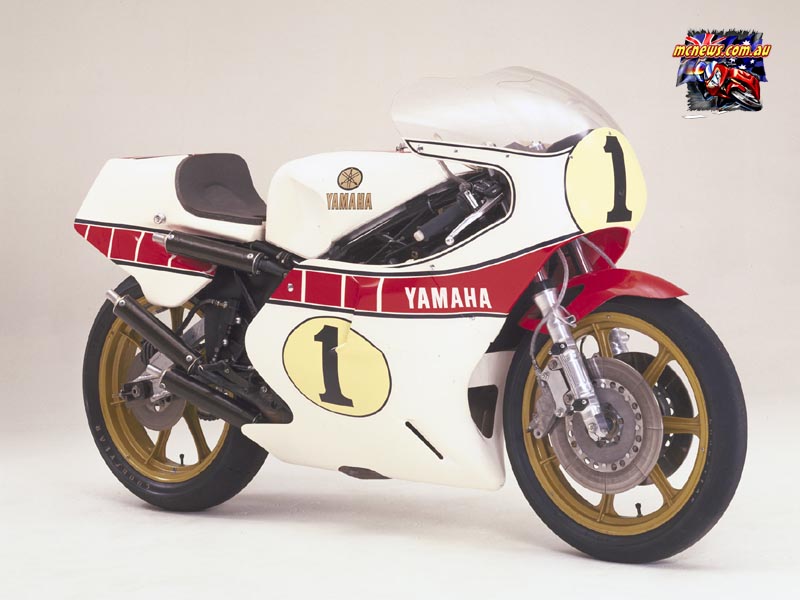
OW48 (1980) – The first aluminium frame model
The OW48 spec was the first YZR500 to adopt an aluminium frame. This frame, using squared aluminium stock, greatly reduced the weight of the chassis. Weight reducing technologies were also employed in other parts of the machine as well. Improvements to the YPVS system boosted power across the full rpm range, and improvements to the cooling system ensured greater reliability. Compact designs for many of the machine components further reduced overall size. The front and rear suspensions were also re-designed, and the front brake was given an aluminium caliper. Roberts started the ’80 GP500 season with three consecutive wins at the opener at Misano, round two at Jarama and round three at Paul Ricard. Roberts won his third consecutive championship title this year running five of the eight rounds on this OW48 and the remaining three on the OW48R spec which featured rear exhaust on the two outer cylinders.
OW48R (1980) – Parallel four for Roberts’ third title
The OW48R spec introduced at the Dutch GP, round four of the ’80 series, was not based on the OW48 with its aluminium frame. It adopted a steel frame of the type used on the previous year’s OW45 spec and mounted an engine with rear-directional (reverse) exhaust for increased power output. Introducing rear exhaust on the first and fourth cylinders, in other words the two outer cylinders, increased power by 7PS. The R in this spec’s name stood for reverse.
Roberts began the ’80 GP500 season with three consecutive wins on the OW48 and then rode the OW48R in round four, the Dutch GP. In this race he was forced to retire due to an air leak in one of his tires, but he rode this spec again at round five, the Belgian GP, and finished third. For rounds six and seven he returned to the OW48 and mounted the podium with two second-place finishes. For the final round he rode a OW48R with aluminium frame (prototype for the next year’s OW53) and finished fourth. While changing machines three times in the course of the season Roberts won his third consecutive title.
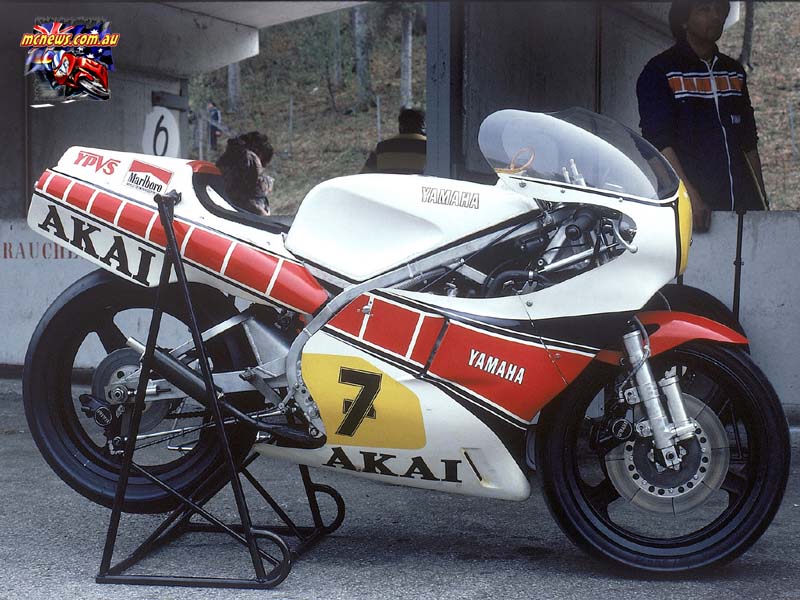
OW53 (1981) – The last parallel four model
The OW53 spec that appeared in 1981 was the successor to the OW48R with its rear-directional exhaust configuration for the two outer cylinders. It would also become the last YZR500 to mount a parallel-four engine. The frame was a further maturation of the squared cross-section aluminium frame first introduced on the OW48 and mounted on it was the same type of rear exhaust engine as the OW48R. The basic dimensions were kept the same as the OW48. This year, 1981 would see the debut of the first square-four engine YZR500 (OW54), ridden by Roberts. Meanwhile, this OW53 would be ridden by Barry Sheene is the first three rounds of the ’81 series, where he finished fourth at Salzburgring, sixth at Hockenheim and third at Monza.
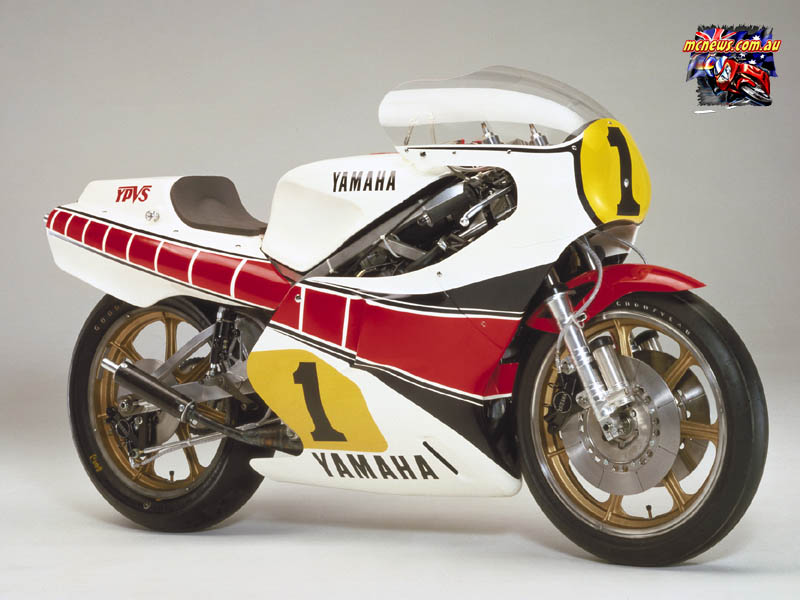
OW54 (1981)- Square-four with rotary disc valve
The 1981 model YZR500 (OW54) was the first Yamaha racer to mount a square-four format engine on an aluminium frame. For the intake system the conventional piston valve was replaced by a rotary disc valve with its outstanding power development characteristics in the high-speed range. On this machine Roberts won the first two rounds of the ’81 season, the West German GP and Monza GP. With brake trouble and other unlucky incidents in later rounds, Roberts eventually finished the season ranked third. From the fourth round at Paul Ricard, Barry Sheene also rode the OW54 won the final round at Anderstorp.
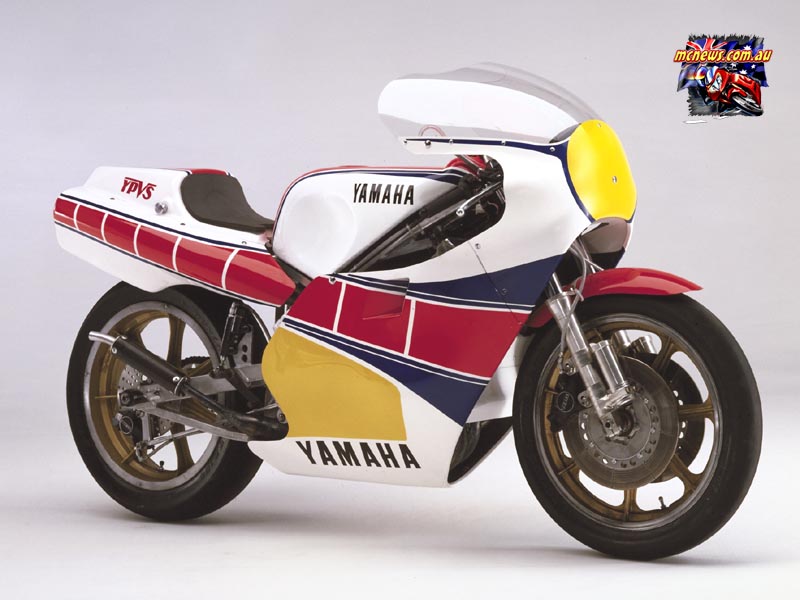
OW60 (1982)- The second-generation square-four
The OW60 spec debuted at the first round of the ’82 season and was the second-generation YZR500 to mount the Yamaha square-four engine. It was six kg lighter then the OW54, which has suffered from its weight disadvantage. It was also a model that saw a new suspension challenge with the introduction of a bell crank to move the rear shock absorber. On this model, Roberts and Sheene finished one-two at the season opener, the Argentina GP. But this would be the only GP win for the OW60, as Roberts switched to a new machine (the V4 engine OW61) from the second round of the series. It was Graeme Crosby who would ride the OW60 throughout the season, and although he never won a round, he continued to finish high in the points and ended the season ranked second, the highest of any Yamaha rider. This machine also mounted an adjustable steering pipe as a test feature.
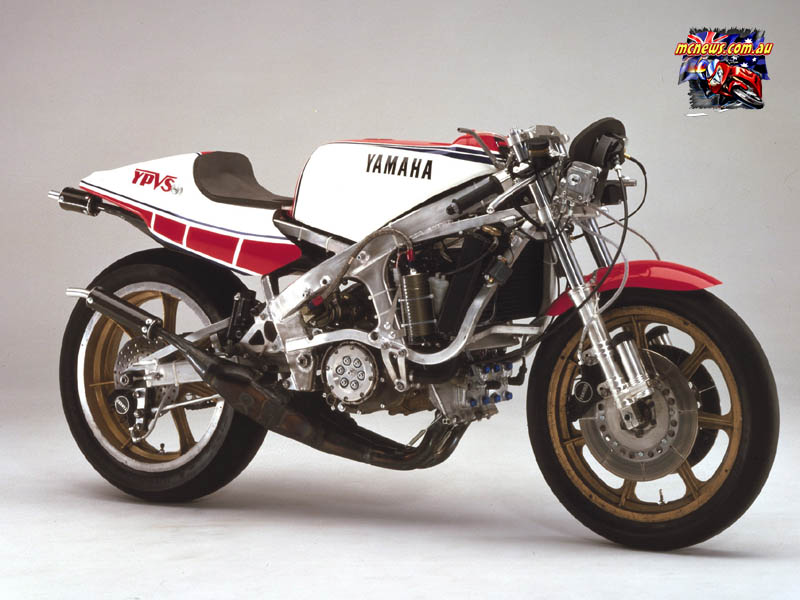
OW61 (1982) – First V4 engine on a 500cc GP machine
The OW61 was not only the first YZR500 to mount a V4 engine, it was also the first ever by any manufacturer for a two-stroke GP500 machine. The other definitive features of this model were its innovative lateral rear suspension with the shock positioned at a 90-degree angle to the direction of forward motion and a unique frame that eliminated the under-loop, which would become the forerunner of Yamaha’s famous Deltabox frame. This was the model that pioneered the two-stroke V4 engine that would eventually become the standard in GP500 racing. After winning the season opener of the ’82 GP on the square-four OW60, Roberts switched to a new V4 engine OW61 for round two at Salzburgring. In this, the OW61’s debut race, Roberts finished third. Riding the OW61 at round four in Jarama, Roberts beat his personal best lap time by a full second on his way to the win.




